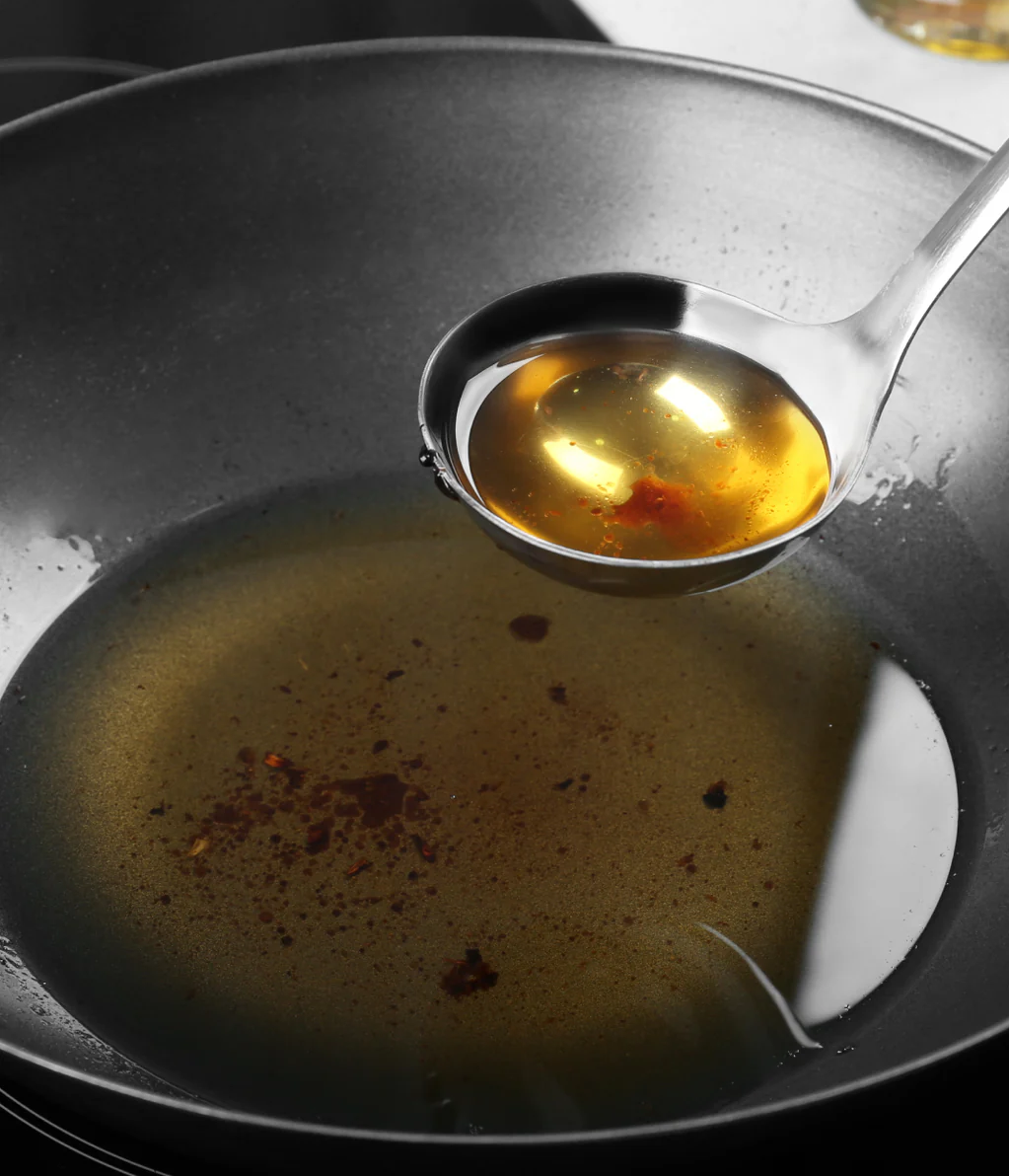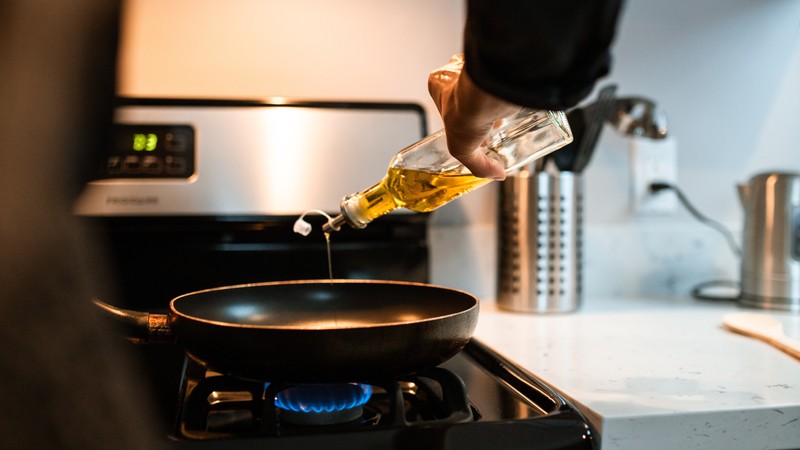
Cooking oil is an often-overlooked kitchen staple. This unsung hero is the reason behind delicious crispy fries, golden fried chicken, and those perfectly sautéed veggies.
But here’s the scoop: how many times can you reuse cooking oil, and when should you bid it farewell?
Ever wonder if you can stretch that bottle of oil for more than one frying session? The answer is yes but with a few caveats. According to The Guardian and The Tasting Table, after using a large amount of oil, you don’t have to throw out your cooking once after using it (and to be fair, it cannot go down the drain anyway).
While some may hesitate at the thought, questioning the safety and hygiene of reused oil, lots of people, ranging from professional chefs who appreciate the enhanced flavour of lightly used oil to resourceful grandmothers who despise waste, strongly advocate for its reuse.
Can you reuse cooking oil and how many times?
The reuse of your cooking oil depends on a few things and here’s what you need to consider:
The type of oil matters
Different oils have different tolerance levels. Oils like peanuts, soybean, and canola tend to hold up well to multiple uses due to their high smoke points. On the other hand, oils like olive or flaxseed have lower smoke points and might not last as long.
What you’ve cooked in the oil
Think about what you cooked in that oil. Delicate foods like fish or chicken tenders leave behind more flavour and particles, which can affect the oil’s quality faster. But if you fried something less flavourful, like potatoes, you might get a few more rounds out of it.
According to America’s Test Kitchen (ATK), what you fry can be more important than the number of times the oil is used in determining how long it lasts: “With breaded and battered foods, reuse oil three or four times. With cleaner frying items such as potato chips, it’s fine to reuse oil at least eight times.”
How you store it
Treat your oil right, and it’ll return the favour. Store it in a cool, dark place away from heat and light. And after each use, strain out any food bits – they can speed up the oil’s demise.
Knowing when to discard your oil
Using oil too many times isn’t just bad for your health, it can also ruin the taste of your food. As the oil gets old, your food might start tasting weird and feeling soggy.
All oil goes bad eventually and although there is no easy way to predict exactly when, here are some signs that may indicate it’s time to part ways with the oil:
A change in colour: Fresh oil has that golden glow, but as you reuse it, it darkens. If it starts resembling the colour of a murky pond, it’s seen better days, and it may be time to throw it out.
Doing a sniff test: Take a whiff. Does it smell funky or off? If the smell is anything other than the regular smell of oil, it’s time to bid farewell.
Checking the texture: Used oil might get thicker and stickier with each use. If it feels more like molasses than oil, it’s reached its limit.
Understand the smoke signals: Lastly, pay attention to its behaviour. If it starts smoking at a lower temperature than usual, this may indicate that it has been overused.
Compiled by: Meagan-Leigh Jacobs
Also see: Reasons why eating raisins can be beneficial to your health






